In May 2019, after 40 years, we the Social Work team, were able to move our case files and office to the building inside the compound of the residential shelter, where we were able to join the rest of the multi-disciplinary team, which has always held office at the shelter. Moving the office brought us hope of improving services by being closer to the children and the rest of the multi-disciplinary team.
When COVID-19 caused CSC to call for employees to be locked-in, two of our three Social Workers (Mardy and Glaiza) were able to volunteer to stay inside. Mardy and Glaiza saw this as an opportunity to continue strengthening relationships with the children, work more closely with the multi-disciplinary team, and dig into some pending files. Cris, the remaining Social Worker, worked from home.
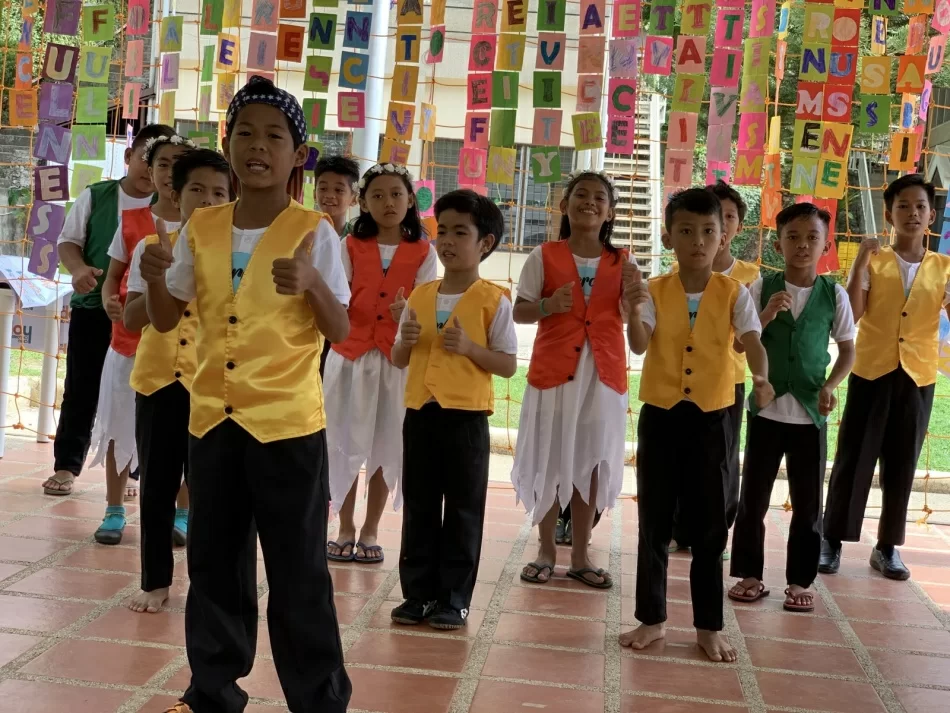 This pandemic posed challenges in case management. We knew it was important to keep the children involved. During the annual Summer Activity Program given to the children at CSC, we were given time to have a "Short Talk" or focused group discussion on an overview of challenges in case management. This was conducted recently at the Medical Building. It was attended by 32 children, ages 10 and above. It was facilitated by Mardy and Glaiza.
This pandemic posed challenges in case management. We knew it was important to keep the children involved. During the annual Summer Activity Program given to the children at CSC, we were given time to have a "Short Talk" or focused group discussion on an overview of challenges in case management. This was conducted recently at the Medical Building. It was attended by 32 children, ages 10 and above. It was facilitated by Mardy and Glaiza.
During the Short Talk, the kids were observed to be engaged, listening, and interested in the topic as they discussed how the challenges brought about by the pandemic affected their future. The children learned that physical birth family visits were not possible with government-imposed travel restrictions and health safety protocols of CSC, but that connecting with birth family as approved, was to be done through telecommunication.
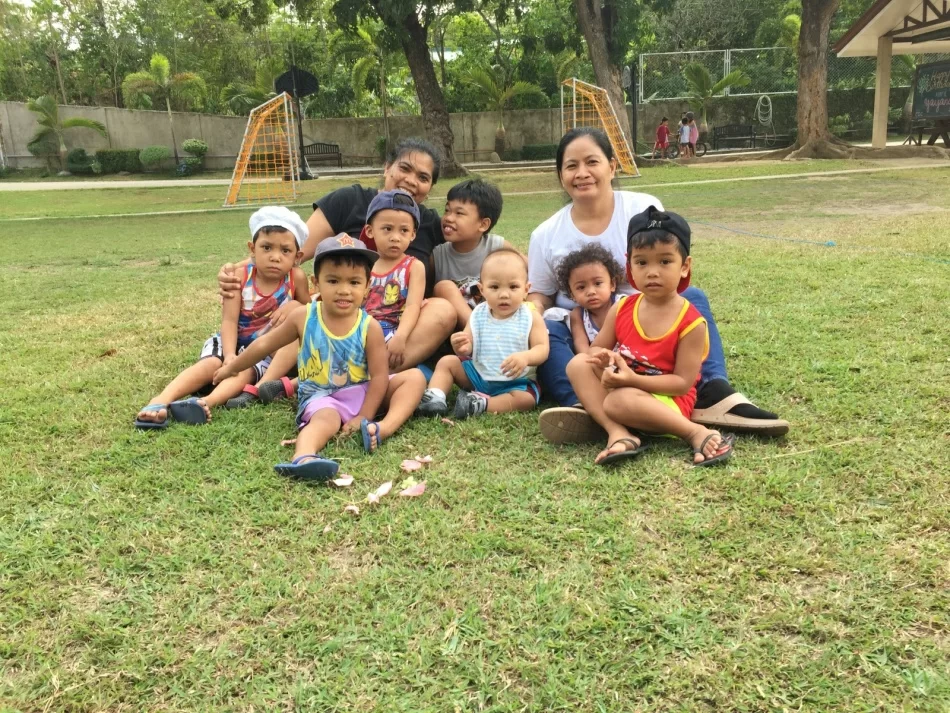 It was a time to affirm that the we and multi-disciplinary team were doing our best to continue to provide for the holistic needs of the children by adapting and learning new ways to deliver services. This could be seen by Cris calling houseparents and children on the phone, counselors providing telecounseling, and therapy services adapted to be home-based until therapists could be admitted inside the shelter after quarantine. Other staff, such as the nurses and teachers, were also locked-in to ensure that the service was available to the children. The children were encouraged as the social workers shared that they (along with the multi-disciplinary team) were always looking at the individual needs of the child and advocating for their best interests.
It was a time to affirm that the we and multi-disciplinary team were doing our best to continue to provide for the holistic needs of the children by adapting and learning new ways to deliver services. This could be seen by Cris calling houseparents and children on the phone, counselors providing telecounseling, and therapy services adapted to be home-based until therapists could be admitted inside the shelter after quarantine. Other staff, such as the nurses and teachers, were also locked-in to ensure that the service was available to the children. The children were encouraged as the social workers shared that they (along with the multi-disciplinary team) were always looking at the individual needs of the child and advocating for their best interests.
The children understood the challenges we faced to complete some requirements due to travel restrictions or safety protocols and that this affected other professionals and offices working on their cases as well. However, the children were assured that we were proactive in lobbying for them. Social workers were in contact with government offices, including the Department of Social Welfare and Development and Inter-Country Adoption Board. We were learning new ways to submit Child Study Reports and to keep connected with other professionals and agencies involved in case management. True to being advocates, it is at the heart of the social work department to steward time and services available for the benefit of the child regardless of the circumstance.
The rising concern among the older children at risk of aging out of adoption was discussed. They expressed concern about what their future would hold and if that would be together with CSC. It was explained that CSC had prepared for this by teaching the children at the shelter life and independent living skills. The Independent Living Program was still a residential shelter but with more in-depth training on these skills to help them transition out to the community.
We can imagine the inner turmoil social workers and case workers, nationally and around the globe, have at this time being unable to physically reach their clients or offices. Our heart goes out to the children and families who have lost this connection and keep them in our prayers.
Thankfully, at CSC, we have the option to be together with the children. We have options that allow us to continue in our ministry commitment to provide children a temporary shelter and case management. Being with them has allowed us to further think out of the box and see areas we can continue to serve.
This pandemic has highlighted challenges and blessings in connection. As social workers in service to the children at CSC, the time to be with them has been an encouragement to us. We are blessed to see how the children are growing, coping, and learning during this season. We are grateful for this opportunity to be able to connect and be readily available to them.
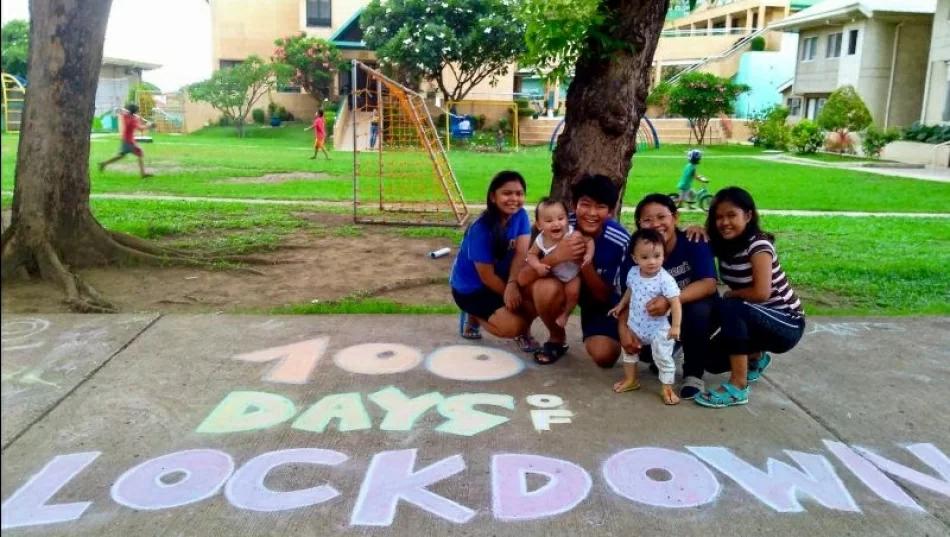
Who is the teacher?
Teacher Kristen is new to the CCHS team and we are so glad she is with us. Read on to find out what lesson she learned in her first few weeks on the job.

This is my first year ever teaching and I am so glad to be at Cebu Children of Hope School! The things they taught me in college have prepared me for the classroom, but only to a certain point. I've been struggling a bit with new routines and new students. I have tried many of the strategies I learned in college to help students focus in class but they haven't helped much.
I remember when I was a student like them. School was tiring for me as I had to sit most of the day and just listen to the teacher. Not very fun. When I started teaching this year I realized I was doing the same thing my past teachers did, things that made me, as a student, bored. In the first few weeks of school my students at CCHS taught me that I was too idealistic when it came to teaching. They taught me that I needed to cool down and start embracing their unique qualities.
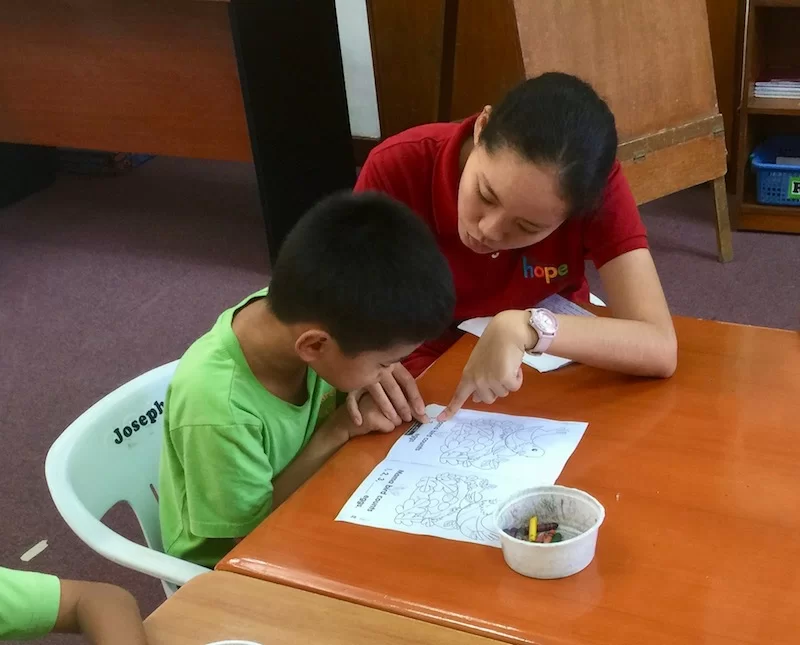
Once I realized this I made some changes in my classroom. I started to really listen to them and smile more. Very quickly I saw changes in their behavior. Now I am having fun teaching them and I love how they respond in class- showing excitement to learn!
Teachers are supposed to be the ones to teach kids. At CCHS I have learned that often kids can be great teachers.
Preschoolers and Plants
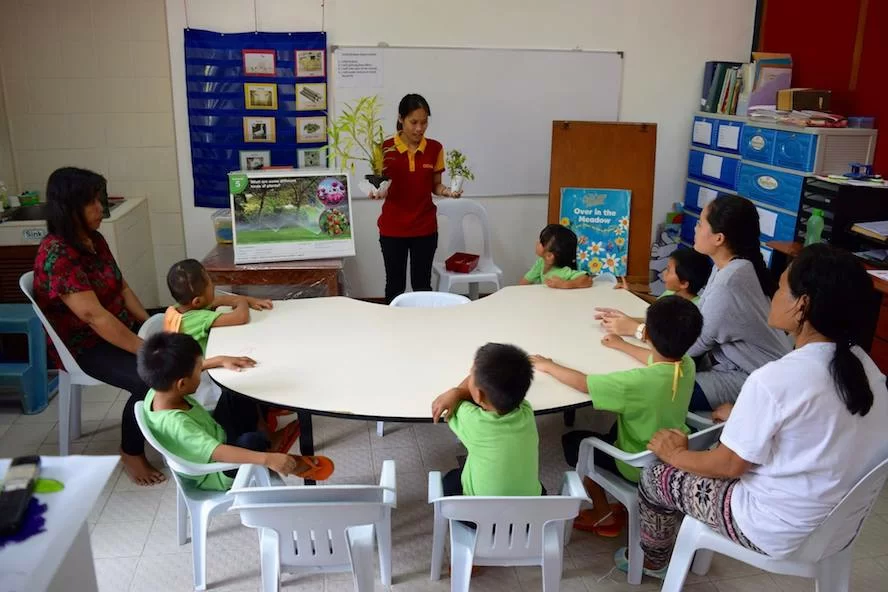
The preschoolers have been learning about the difference between living things and nonliving things. One example of a living thing, which we have been studying a lot about, is a plant. Every time I review with the children they say, "Sige ug balik" (It's a repeat). By the end of the unit the preschoolers were able to identify a plant, tree, shrub, vegetable, and grass. They also learned the parts of the plant (stem, flower, fruit, and roots) and where plants live (in desserts, farms, forests, and gardens).
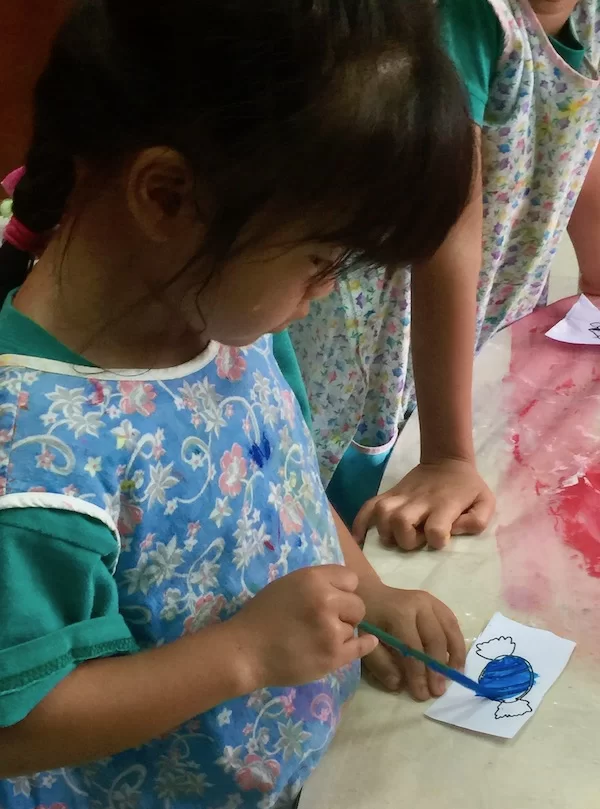 One of my favorite parts of the unit was taking the preschoolers outside for a mini field trip. Our school is surrounded by many different kinds of plants. On our "living things walk" we saw many banana trees, mango trees, and even an avocado tree. The preschoolers loved searching for living things and telling us what they found.
One of my favorite parts of the unit was taking the preschoolers outside for a mini field trip. Our school is surrounded by many different kinds of plants. On our "living things walk" we saw many banana trees, mango trees, and even an avocado tree. The preschoolers loved searching for living things and telling us what they found.
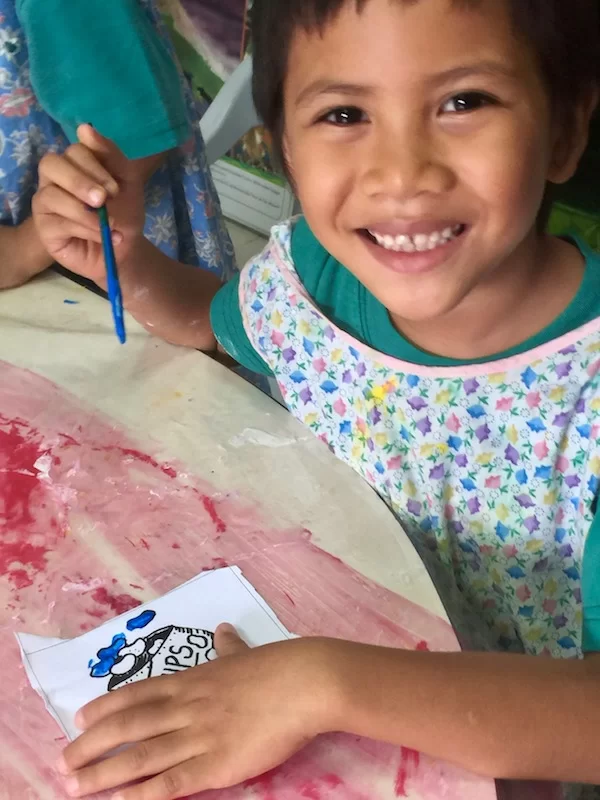
What a joy it was teaching the preschoolers about plants. We had a fun time learning together!
Creative Minds
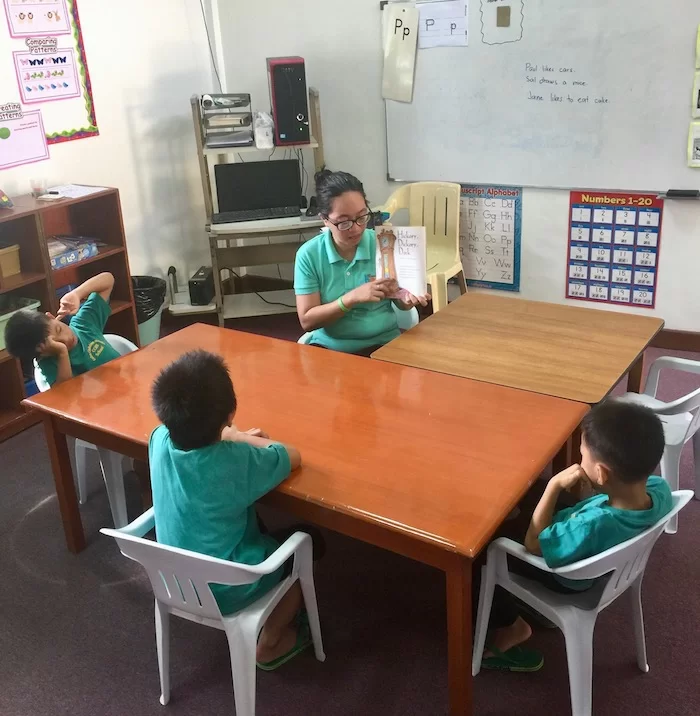
Having conversations with my students helps them learn to interact with their peers and teachers. It has a great impact on their learning and ability to listen as well.
I started this year with just three kids in my classroom. Three kids who love conversation and enjoy sharing their thoughts. One afternoon, during Civics class, one of my students shared with me about one of the CSC aunties (child care workers).
Student 1: Teacher, our auntie just had a baby! (saying it excitedly)
Me: Wow, that's great! Do you know if the baby is a boy or a girl?
Student 1: I don't know.
Student 2: Teacher, I know where the baby comes out.
Me: Where?
Student 2: Here! (referring to his bottom)
Student 1: No Teacher! I heard that a baby comes out from your belly button.
Student 3: Teacher, I know where babies come out of, here in our back.
Student 1: (reacting with a shocked face) No, the baby can't come out of there!
Me: Why?
Student 1: Because our back has a lot of bones. The baby will get hurt!
I love teaching at Cebu Children of Hope School for many reasons. One of them is the creative minds these little children have. You never know what ideas they will share.
Goodbye Up There!
Child welfare types refer to children who become very close while in care at a place like CSC as "institutional siblings." They are not siblings by blood but by affinity. Many of our children experience that kind of relationship while living at CSC. For the younger ones, they don't understand the difference. Such was the case with little Jacob. He had four very good buddies in the Eicher Home nursery. They spent lots of time together eating and playing. They looked out for each other, fought like true siblings and were known to tattle on each other on occasion.
Recently, Jacob was adopted by a great family from Europe. Shortly before Jacob's family came to get him, two of his pals got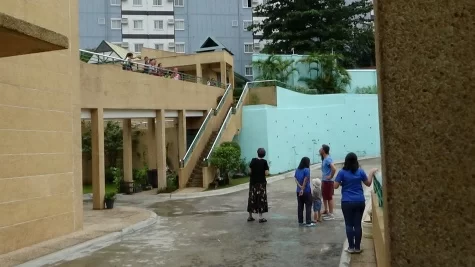 sick and had to be in isolation. Their ailment was very contagious. We worried that Jake, too, would get sick when he was supposed to travel but, thankfully, that didn't happen. But we felt bad that Jake wouldn't be able to say goodbye to his buddies. So Marlys came up with a plan. The infirmary caregivers brought the sick children outside to the bridge and Jake was able to look up, see them and say goodbye. The overhead kids shouted "bye-bye" and it was very touching. Certainly they didn't understand that he was going far away and they might never see him again. But they knew something big was up.
sick and had to be in isolation. Their ailment was very contagious. We worried that Jake, too, would get sick when he was supposed to travel but, thankfully, that didn't happen. But we felt bad that Jake wouldn't be able to say goodbye to his buddies. So Marlys came up with a plan. The infirmary caregivers brought the sick children outside to the bridge and Jake was able to look up, see them and say goodbye. The overhead kids shouted "bye-bye" and it was very touching. Certainly they didn't understand that he was going far away and they might never see him again. But they knew something big was up.
There is lots of love at CSC. Jacob experienced that from house parents, child care workers, staff and the other children. Now he will be feeling the love of a family. And a new sibling that will be his forever.
Science Can Be Funny
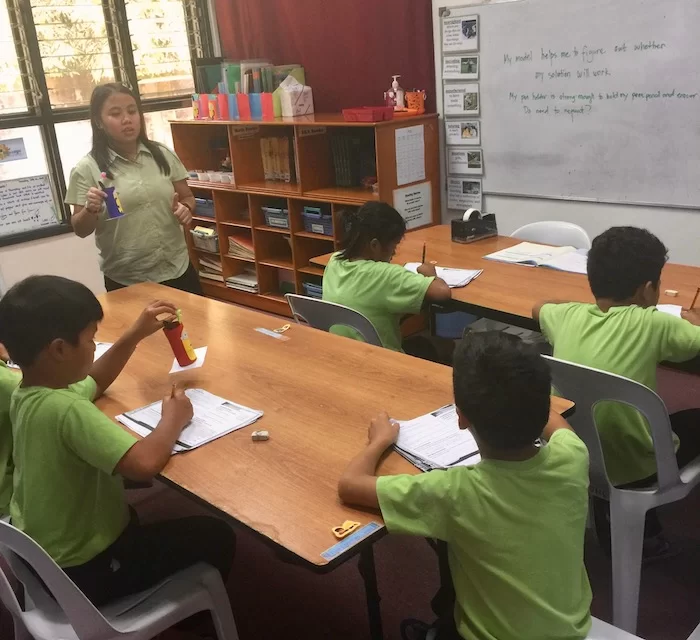
The official school year has begun at CSC! Teacher Lyrah, one of our dedicated and gifted teachers, shared about a science lesson she taught the other day:
Everyone was ready and calm as I stepped into the classroom. The students seemed very excited for the afternoon's discussion entitled "The Scientist and the Science tools."
I asked my students about the science tools and the brainstorming happened like this:
TEACHER: Can you still remember some of the science tools that you learned about last year in your class?
STUDENTS: Yes, Teacher Lyrah!
TEACHER: Tell me about one of those science tools.
STUDENT 1: Teacher, a hand lens.
STUDENT 2: How about a balance?
STUDENT 3: A measuring cup.
STUDENT 4: Thermometer!
TEACHER: WOW! You are really thinking about these tools. What are some others?
I called on one student who hadn't answered yet.
TEACHER: Okay, what is it?
He was very hesitant about his tool and just smiled again.
STUDENT 5: Teacher, how about a telecopter?
He was laughing so hard because he mentioned the tool in a different way. Everyone in the class was puzzled about his answer.
STUDENT 1: What do you mean a telecopter?
Student 5 laughed so hard and kept on saying the word telecopter.
STUDENT 5: (laughing) Teacher, what I mean is a telescope not a telecopter!
TEACHER: A telecopter? That word is a combination of a telescope and a helicopter. Isn't it?
He laughed and said: " Yes, teacher because we use a telescope to see the stars and other flying objects like helicopters."
Then I remembered the time last year when I showed them a telescope and we talked about how it worked.
Everyone in the classroom was amazed with his great new word invention!





